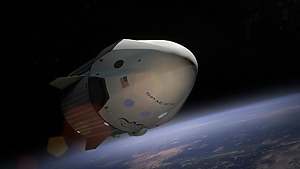The development of space-to-space weapons platforms highlights the escalatory potential in the technological arms race that we are presently seeing in space. This also applies to nuclear space weapons believed to be in the possession of some countries, which could rapidly knock out large swathes of our orbital infrastructure for global telecommunications.
The dependence on orbital infrastructure has become a vulnerability
The global threat posed by anti-satellite weapons is so enormous due to the broad range of human activities that today depend on satellites. Without satellites, global navigations, logistics, and communication would collapse, early warning systems for forest fires or floods would stop functioning, internet access would be limited to regions with cable connections, and international trade sanctions against North Korea and other rogue states would become harder to enforce.
As the world has become dependent on satellites, it has also become more vulnerable to disruption. The so-called Kessler Syndrome is an especially significant global risk: space warfare could dramatically increase the number of small debris that circle the planet. These small pieces can collide at very high velocities with other objects leading to further fragmentation and potential collision cascades that could, in theory, destroy most or all of our orbital infrastructure.
And this is not everything: armed forces worldwide, from the USA to China up to India and Pakistan, use satellites to monitor potential nuclear weapons launches by their adversaries. In theory, satellites allow governments of nuclear weapons states to detect nuclear attacks early enough to respond with an attack of their own.
This leads to deterrence – states refrain from using nuclear weapons for the first time because they believe that their adversaries will be able to respond with a massive retaliatory strike. Best encapsulated in a Cold War military doctrine known as Mutually Assured Destruction, this is a major part of the explanation for why nuclear weapons have not been used in war since 1945. However, if satellites are switched off and early warning systems cease to function, deterrence is weakened, and nuclear instability can result.
The role of satellites in modern conflicts
The war in Ukraine also powerfully highlights the importance of satellites in conventional military operations. However, as Ukraine only possesses a single registered satellite that is under direct governmental control, it has become dependent on commercial satellite service providers. This notably includes the Starlink system, which is operated by a subsidiary of SpaceX which is owned by Elon Musk. His political views have been raising troubling questions in recent months and years.
Airbus, a heavyweight of the European aerospace and defence industry, has recently been accused of providing Russia with satellite images to guide attacks against Ukrainian targets. The role of private satellite operators in the Ukrainian war is therefore a matter of some concern and highlights the dilemma of dual-use satellite technologies, as they can be used for both civilian and military purposes simultaneously.
Among other issues, this dual-use challenge creates problems for technology transfers. For example, the USA severely restricts the export of satellite technology to China. Many other countries have similar export control measures. This limits internationalisation: most of the world, especially developing countries, do not have their own satellite capabilities. As a result, they are unable to benefit from the many important advantages that this technology can bring, not only in terms of science and innovation, but also in terms of sustainable development.
The need for responsible space politics
Governments must prevent the militarisation of space following international agreements, such as the 1967 Outer Space Treaty. They should also ensure greater transparency and accountability for the private organisations that own or control vast amounts of space technology and infrastructure.
More fundamentally, the political focus should shift from military applications to the benefits that space can deliver for the common good of humanity.
Florian Rabitz, Inga Popovaitė, and Vidas Vilčinskas, researchers in the Research Group Civil Society and Sustainability at Kaunas University of Technology, explore the above-described issues. They collaborate on the project “The Transnationalization of Outer Space,” funded by the Research Council of Lithuania (grant no. P-MIP-23-234).



